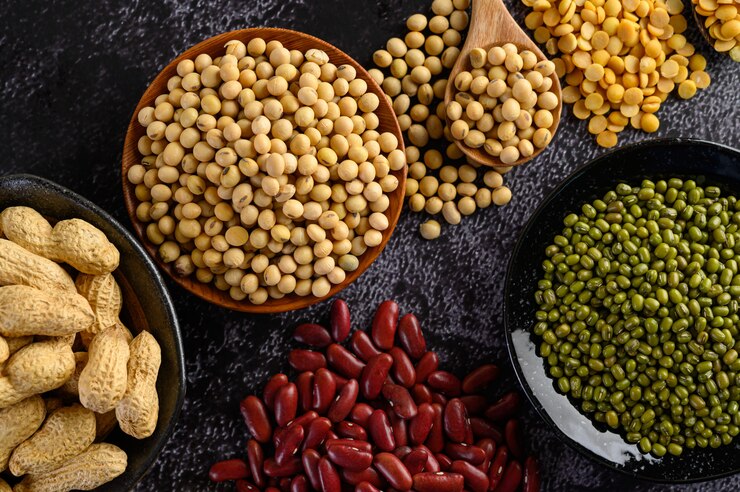The “Bean of India” refers to the diverse and culturally significant beans cultivated throughout India. Beans play a vital role in Indian agriculture, cuisine, and economy, making them an essential component of daily life. This article delves into the different types of beans grown in India, their nutritional benefits, cultural significance, and their impact on local economies. We will also explore how beans are integrated into traditional dishes and the various ways they are prepared across regions.
Types of Beans Cultivated in India
1. Mung Beans (Moong Dal)
Mung beans, also known as Moong Dal, are among the most popular and versatile beans in India. They are small, green legumes that are widely used in Indian cuisine. Mung beans can be consumed in various forms, including whole, split, or as a flour. They are known for their high protein content and are often used in dishes such as:
- Moong Dal Soup: A light, nutritious soup made with mung beans, spices, and vegetables.
- Khichdi: A comforting dish made with mung beans, rice, and spices, often served during illness or as a light meal.
- Chilla: Savory pancakes made from mung bean flour, commonly enjoyed for breakfast or as a snack.
2. Black Beans (Urad Dal)
Black beans, or Urad Dal, are another significant variety of beans in India. They are black on the outside with a white interior and are known for their rich flavor and high nutritional value. Urad Dal is often used in:
- Dal Makhani: A creamy, rich dish made with black beans, butter, and cream, often served with naan or rice.
- Idli and Dosa Batter: Fermented batter made with urad dal, used to make idlis (steamed rice cakes) and dosas (thin crepes).
3. Kidney Beans (Rajma)
Kidney beans, known as Rajma in India, are large, red beans that are popular in northern Indian cuisine. They are often used in hearty, flavorful dishes such as:
- Rajma Masala: A spicy, tomato-based curry made with kidney beans, often enjoyed with rice.
- Rajma Salad: A healthy salad made with kidney beans, chopped vegetables, and a tangy dressing.
4. Chickpeas (Chana)
Chickpeas, or Chana, are one of the most commonly consumed beans in India. They come in two varieties: white chickpeas (Kabuli Chana) and black chickpeas (Kala Chana). Chickpeas are used in:
- Chole: A spicy chickpea curry commonly served with bhature (deep-fried bread) or rice.
- Chana Chaat: A tangy, spicy salad made with chickpeas, onions, tomatoes, and chutneys.
5. Pigeon Peas (Toor Dal)
Pigeon peas, or Toor Dal, are another staple in Indian cuisine. They are commonly used in:
- Sambar: A spicy, tangy lentil soup with vegetables, often served with rice or dosas.
- Dal Tadka: A dish made with cooked pigeon peas, tempered with spices and ghee.
Nutritional Benefits of Beans
Beans are not only a staple in Indian cuisine but also a powerhouse of nutrients. They are rich in:
- Protein: Beans are an excellent source of plant-based protein, making them a crucial part of vegetarian diets.
- Fiber: The high fiber content in beans helps in digestion and can aid in maintaining healthy cholesterol levels.
- Vitamins and Minerals: Beans provide essential vitamins and minerals, including folate, iron, potassium, and magnesium.
- Antioxidants: Beans are rich in antioxidants that help combat oxidative stress and inflammation in the body.
Cultural Significance of Beans in India
Beans hold a significant place in Indian culture, not just for their nutritional value but also for their role in traditional festivals and rituals.
Traditional Festivals
In various Indian festivals, beans are used in special dishes and offerings. For example:
- Lohri: In the northern states, Lohri, a festival marking the end of winter, is celebrated with dishes made from lentils and beans.
- Pongal: In Tamil Nadu, Pongal is a harvest festival where beans are used in the traditional dish called Pongal, made with rice and moong dal.
Religious Offerings
Beans are also used in religious offerings and rituals. For example:
- Kheer: A sweet pudding made from lentils, sugar, and milk is often offered during religious ceremonies and special occasions.
Economic Impact of Bean Cultivation
Bean cultivation is an essential part of India’s agricultural economy. The production of beans supports the livelihoods of millions of farmers across the country. The economic impact includes:
Employment
Bean cultivation provides employment opportunities for farmers, farm workers, and those involved in the supply chain, from processing to retail.
Export Opportunities
India is a significant exporter of various beans, including mung beans and chickpeas. Exporting beans contributes to the country’s economy and trade balance.
Sustainable Agriculture
Beans are often grown in rotation with other crops, helping to maintain soil fertility and reduce the need for synthetic fertilizers. This practice supports sustainable agriculture and environmental conservation.
Regional Variations in Bean Dishes
India’s diverse cuisine reflects the regional variations in the use of beans. Here’s how beans are enjoyed across different regions:
Northern India
In northern India, beans like kidney beans and black beans are commonly used in rich, hearty curries. Rajma Masala and Dal Makhani are staples in this region, often enjoyed with rice or Indian bread.
Southern India
Southern India favors lighter, spiced dishes with beans. Mung beans are used in dishes like Pongal and Sambar, while black beans are used in idli and dosa batters.
Eastern India
In eastern India, beans are used in a variety of vegetarian dishes. For example, Chana Masala is a popular dish in Bengal and other states in the region.
Western India
In Western India, beans are used in a range of snacks and street foods. Chickpeas are often used in chaats and spicy salads, while pigeon peas are used in traditional curries.
Conclusion
The “Bean of India” encompasses a wide range of legumes that play a crucial role in the country’s agriculture, cuisine, and economy. From mung beans to kidney beans, each variety offers unique flavors and nutritional benefits. Beans are deeply embedded in Indian culture, featuring prominently in festivals, religious rituals, and regional dishes. Their cultivation supports millions of livelihoods and contributes to sustainable agricultural practices. Understanding and appreciating the significance of beans helps in recognizing their vital role in India’s rich culinary and agricultural heritage.
FAQs
What are the most common types of beans grown in India?
The most common types of beans grown in India include mung beans (moong dal), black beans (urad dal), kidney beans (rajma), chickpeas (chana), and pigeon peas (toor dal). Each variety has its own unique uses and cultural significance.
What are the health benefits of consuming beans?
Beans are rich in protein, fiber, vitamins, and minerals. They support digestive health, help in maintaining healthy cholesterol levels, and provide essential nutrients. Beans are also high in antioxidants, which help combat oxidative stress.
How are beans used in traditional Indian dishes?
Beans are used in a variety of traditional Indian dishes, such as Rajma Masala, Moong Dal Soup, Chole, and Sambar. They can be prepared in various ways, including curries, soups, salads, and snacks.
What role do beans play in Indian festivals and religious rituals?
Beans are used in special dishes and offerings during Indian festivals and religious rituals. For example, lentil-based dishes are prepared during Lohri and Pongal, and bean-based sweets are offered during religious ceremonies.
How does bean cultivation impact the Indian economy?
Bean cultivation supports the livelihoods of millions of farmers and provides employment opportunities across the agricultural supply chain. Additionally, beans are a significant export commodity, contributing to India’s economy and trade balance.







